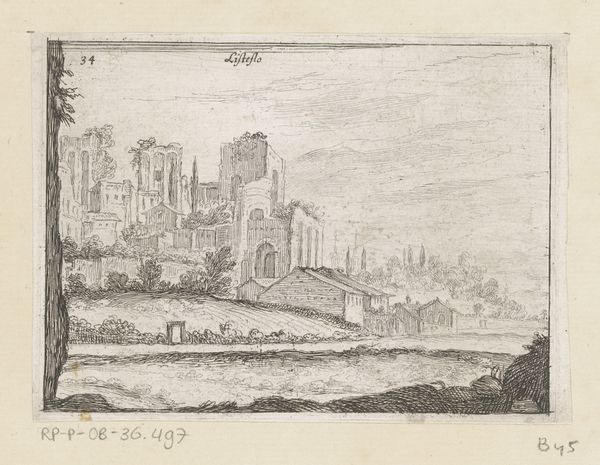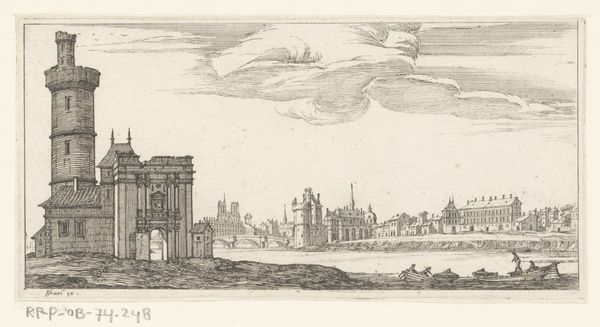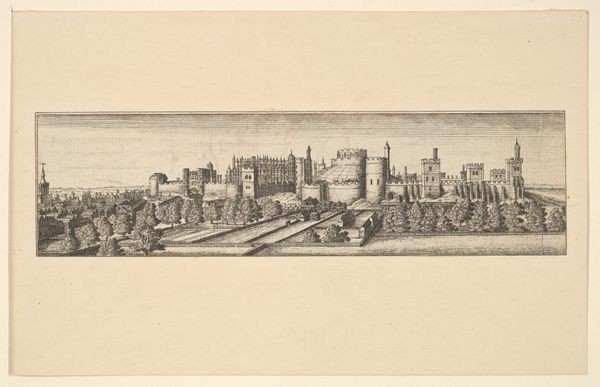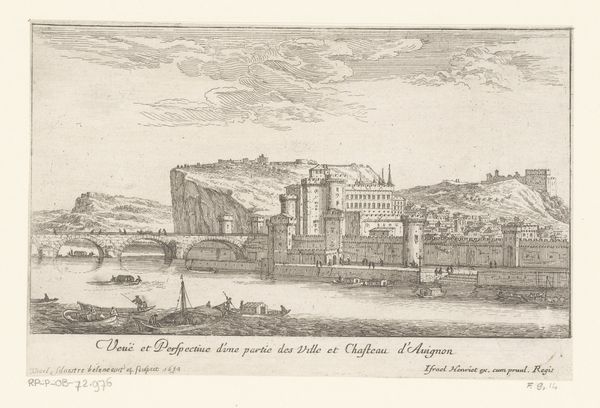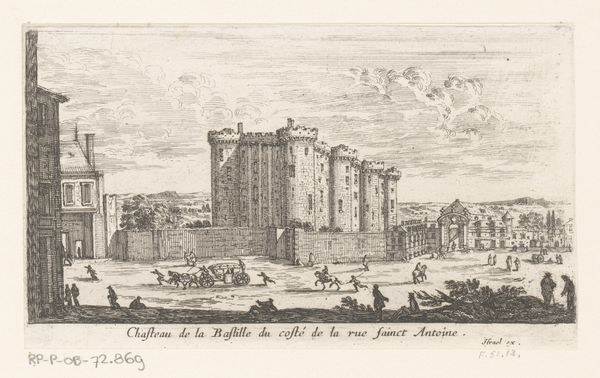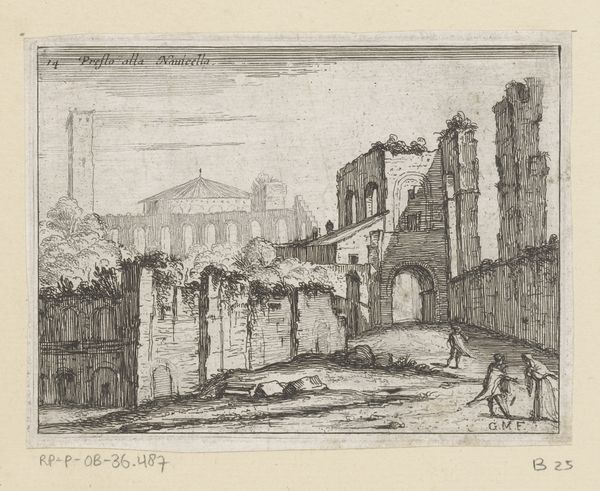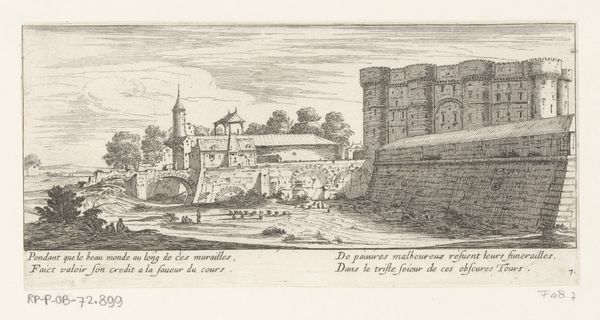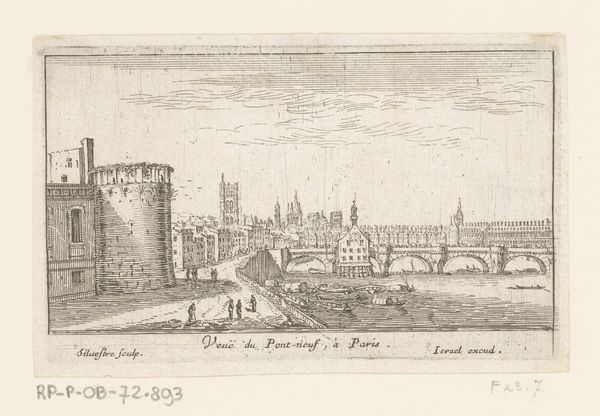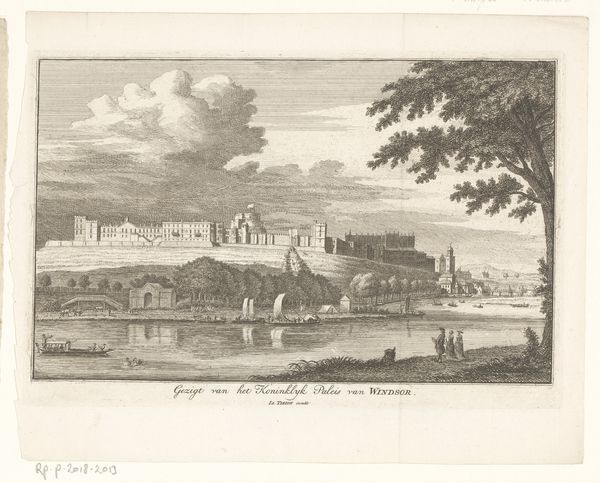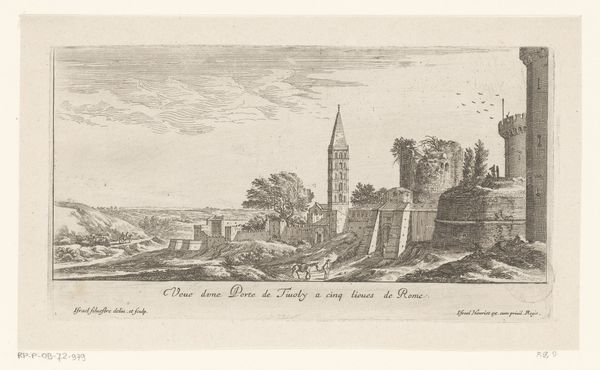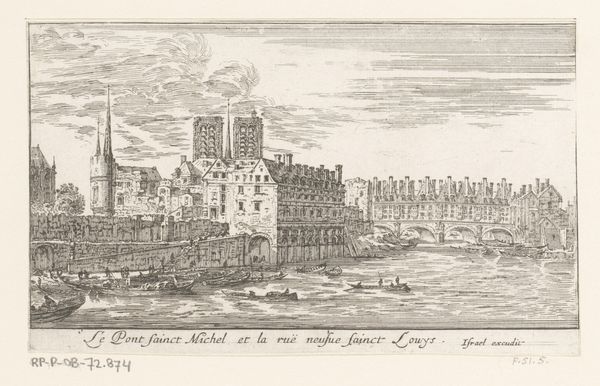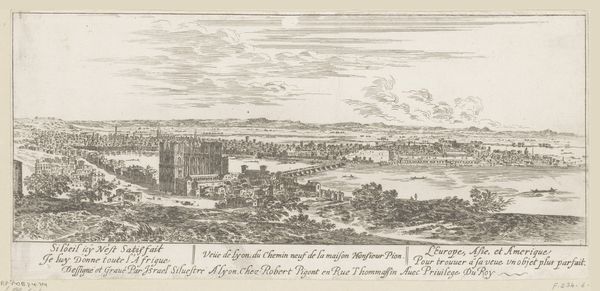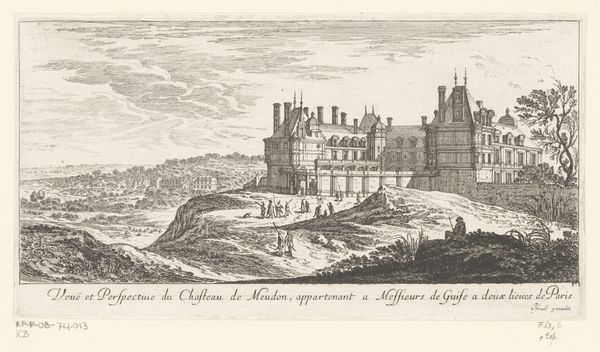
print, etching
#
baroque
# print
#
etching
#
cityscape
Dimensions: height 139 mm, width 250 mm
Copyright: Rijks Museum: Open Domain
Curator: Immediately, I see a walled city that feels very impregnable, almost foreboding in its strength. The architectural rendering is incredibly detailed for an etching. Editor: Indeed. What we are observing is "View of a Castle in Avignon" from 1654, crafted by Israel Silvestre. It’s an etching, and I find it interesting to consider the time. Silvestre was working during the Baroque period when absolutism, and urban planning flourished. Curator: That emphasis on absolutism resonates. Look how the castle looms over the town; it feels as if it’s meant to inspire a sense of awe—or perhaps to keep people in check. Even the fortified walls seem more than just protective. Editor: Right, we should think about these visual elements as symbols of power. Cityscapes at this time are rarely neutral; instead, they reflect social hierarchies. Those walls could tell us how rulers separate themselves. Who is inside and outside the walls is of utmost importance to understanding power dynamics at this period. Curator: The etching itself emphasizes detail. Every stone in the castle walls seems perfectly rendered. It presents a clear image, certainly, yet the level of specificity almost romanticizes, don’t you think? I sense an air of nostalgic reverence. Editor: Nostalgia can function as a powerful ideology. I can't ignore the historical implications in a landscape like this, specifically concerning class and privilege during a turbulent period. It is beautiful, yes, but it might mask inequality. The artist is positioning this space, and the act of seeing and representing it, within systems that warrant further interrogation, what do you think? Curator: A point well taken. It asks us to be conscious, thoughtful viewers of not just what is visually presented but what remains unsaid, perhaps intentionally so, about its social reality. Editor: Precisely. Analyzing visual art, especially landscapes like these, requires an active commitment to unveiling embedded social and political contexts. Curator: Absolutely. Recognizing such imagery, not just appreciating artistry, prompts relevant conversation of how history shapes present contexts. Editor: It also fosters critical dialogues to challenge conventional interpretations and promotes richer societal comprehension.
Comments
No comments
Be the first to comment and join the conversation on the ultimate creative platform.
